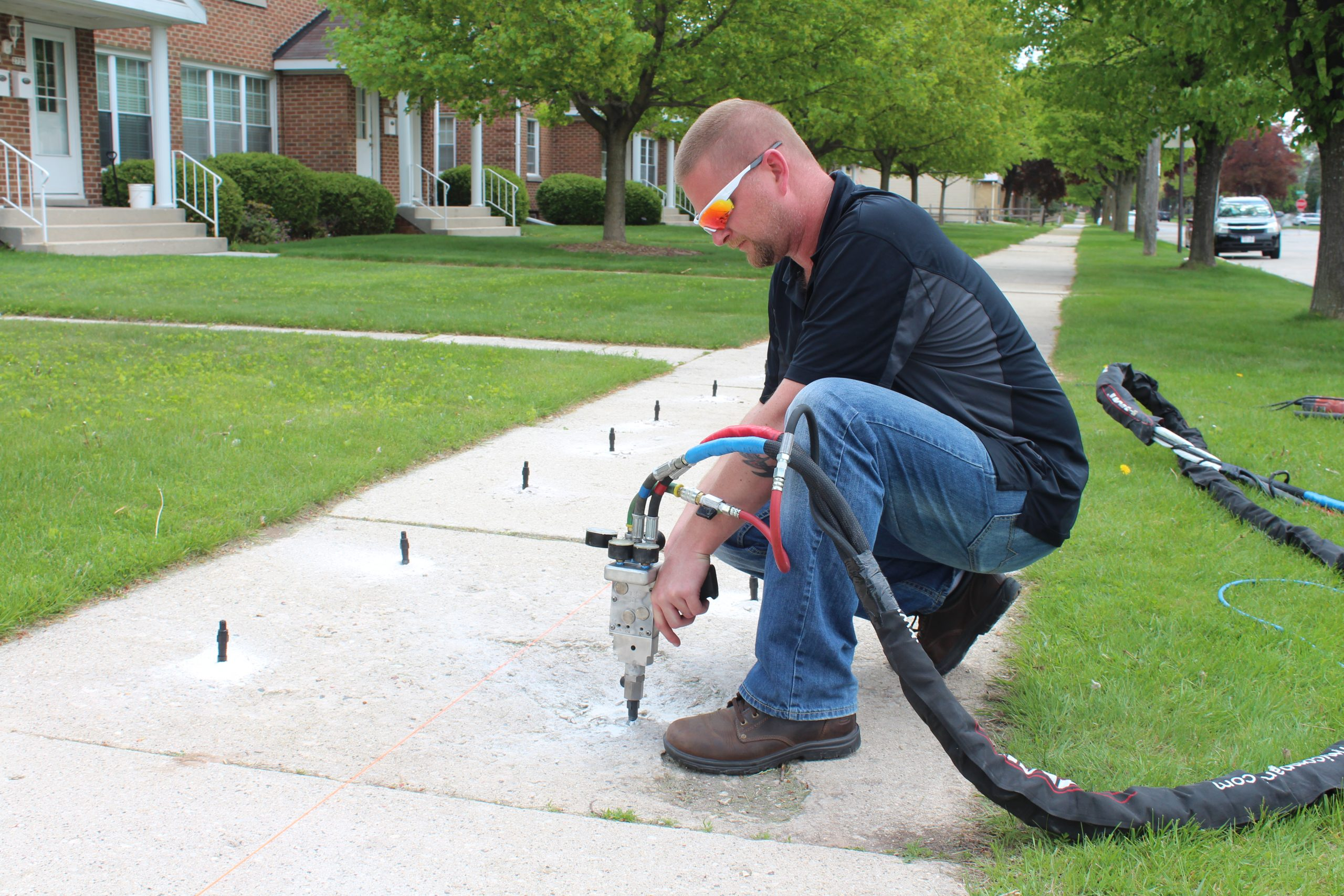Settling sidewalk slabs, uneven front steps, and crooked driveway signs are just a few of the typical problems that concrete homeowners face in Canada. If your concrete has sunk or heaved, you’re probably dealing with more than an unsightly appearance. Uneven concrete poses come with several threats, including tripping hazards, drainage issues, and further deterioration. Fortunately, there is a concrete lifting technique to repair your concrete without tearing it out and replacing it. This technique will also help you raise dropped slabs back to their original position. Moving forward, now let’s read this article that explains what concrete lifting is, how it works, the different types of concrete lifting available, and how much it costs to help you better understand concrete lifting.
What Is Concrete Lifting?
Many homeowners rush to repair their concrete slab at the first sign of difficulty. Even though a new slab could seem nice, there might be better options. Consider hiring a specialist for concrete lifting rather than starting from scratch.
Usually, the professionals can drill holes into your concrete slab. High-pressure polyurethane foam is pumped through these cavities and under the slab. The slab rises as the pressure under the concrete builds, preventing the sinking problem.
After the lifting procedure is complete, the professionals will repair the surface of your concrete slab by patching drill holes and cracks. As a result, you can revive the appeal of your slab without replacing it entirely. Moreover, there are other services like Stone slurry grout concrete lifting, Polyurethane foam concrete lifting, and mud jacking, including driveway lifting Calgary.
How Does The Concrete Lifting Operate?
Although it’s difficult to perform it without the appropriate instruments and knowledge, lifting or levelling concrete is a simple operation that follows these simple steps:
- Holes are deliberately drilled through the afflicted concrete slabs.
- A compound is pushed through the holes and under the slab, filling any voids and creating sufficient back pressure to lift the concrete.
- The boreholes are sealed once the concrete is in place.
Different Types Of Concrete Lifting
As mentioned in the above section there are three different types of concrete lifting that follow the same general processes but differ in the material used and the size of the drill holes.
Stone Slurry Grout Concrete Lifting
- Lifting Compound: The stone slurry grout concrete lifting technique uses water and crushed agricultural limestone to elevate concrete, creating a solid, dense base underneath the freshly raised concrete. When more strength is required, the mixture may occasionally add Portland cement.
- Drill Hole Size: For stone slurry grout levelling, drill holes of about 1 inch in diameter, or roughly the size of a quarter, are required.
Polyurethane Foam Concrete Lifting
- Lifting Compound: The foam concrete levelling/lifting method employs a two-part polyurethane foam that mixes and expands when injected beneath the concrete slab due to a chemical reaction. This expansion applies pressure to the settled slab, causing it to rise.
- Drill Hole Size: The drill hole required for foam concrete levelling is approximately 58 inches in diameter.
Mudjacking
- Lifting Compound: Mudjacking lifts settled concrete by pumping a mixture of sand, soil, and water at high pressure. For enhanced strength, Portland cement can be added to this combination.
- Drill Hole Size: The drill holes must be more significant to accommodate the higher pumping pressure required for the mudjacking procedure. Mudjacking holes are normally 2 inches in diameter.
How Much Does Expense Need For Concrete Lifting?
The cost of a concrete lifting repair depends on the issue’s complexity and other elements. Furthermore, these price ranges vary in places with higher or lower living costs than in Canada. Generally, foam concrete levelling is more expensive than stone slurry grout concrete levelling due to more significant material costs, while mudjacking is cheaper than both options.
Bottom Line
Consider concrete lifting if you’re tired of staring at the cracks in your concrete or concerned about structural problems and hazards. The leading concrete degradation issues won’t go away or improve with time. Reluctance will only make the situation worse. Therefore, save time and money while maintaining your home’s curb appeal. Make a quick appointment with concrete lifting now for all your concrete problems!










